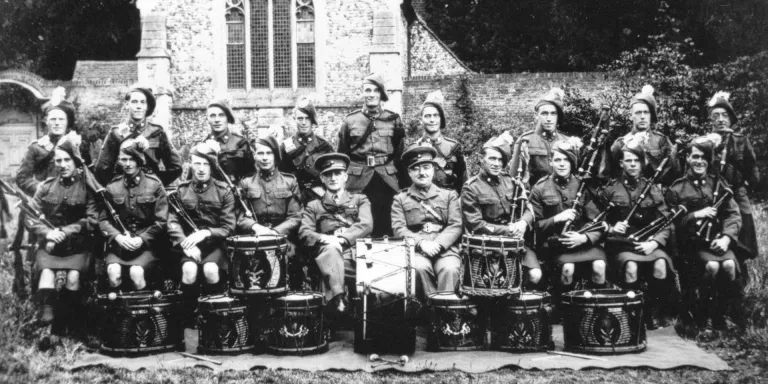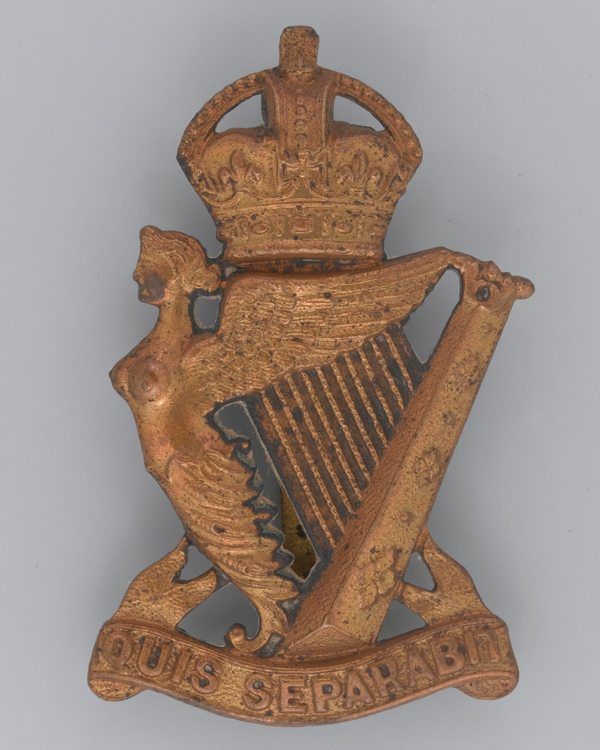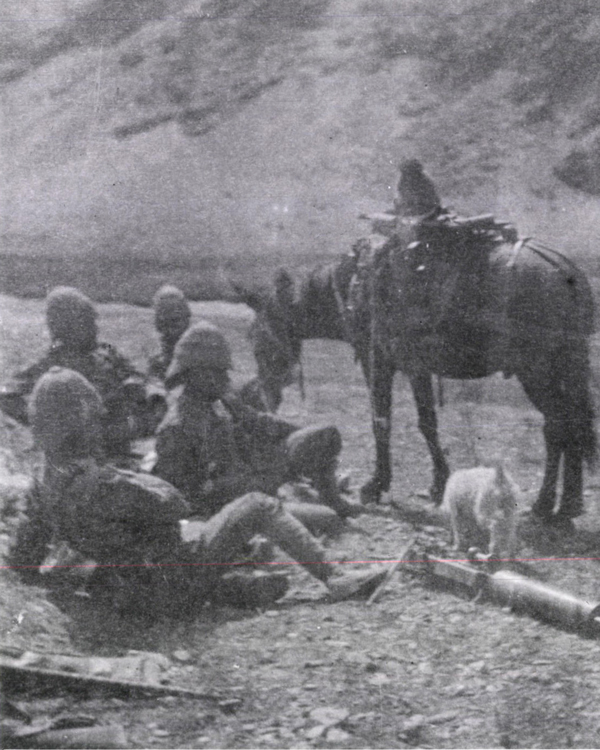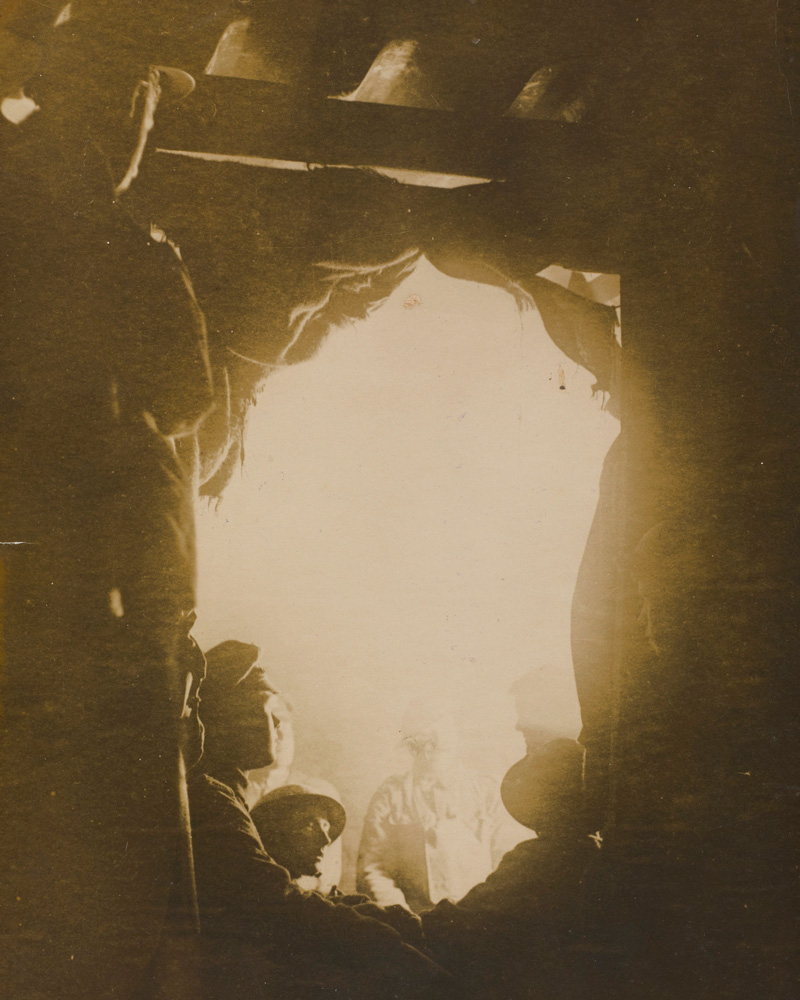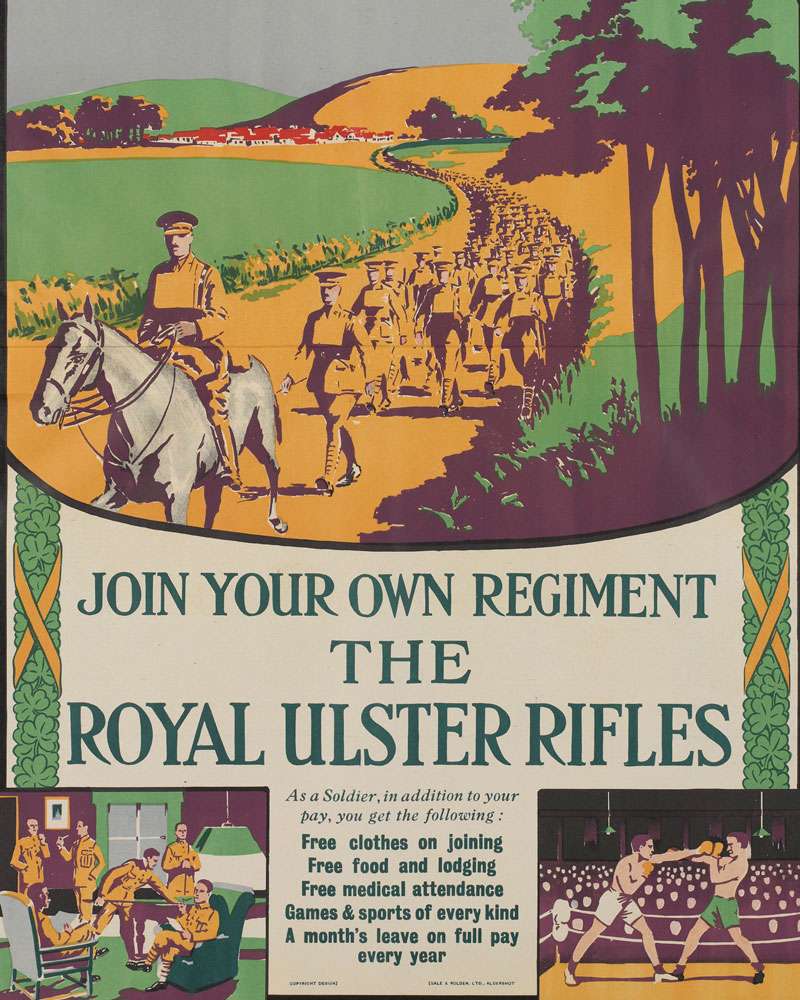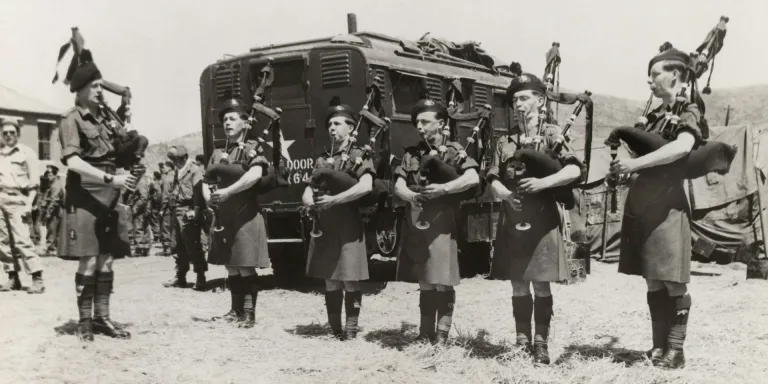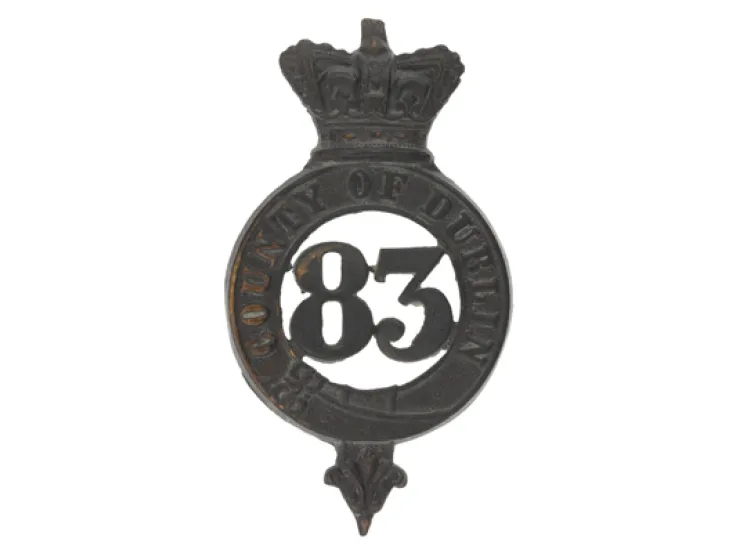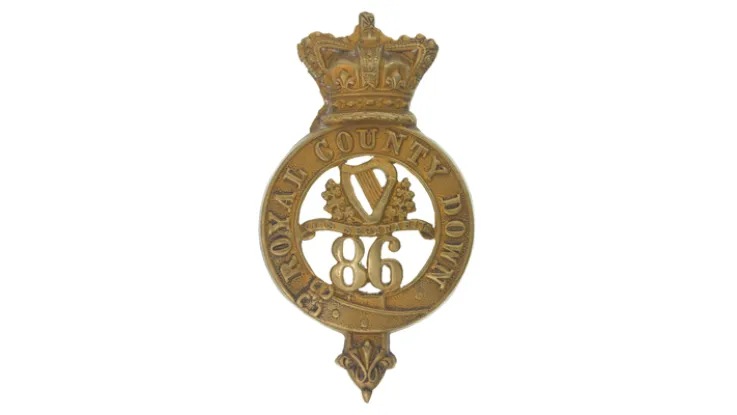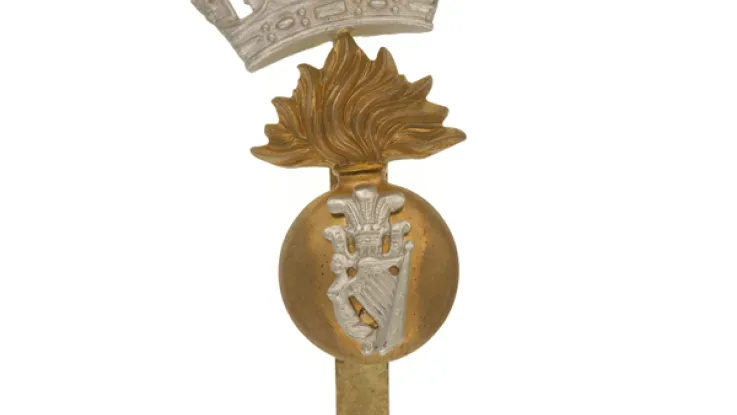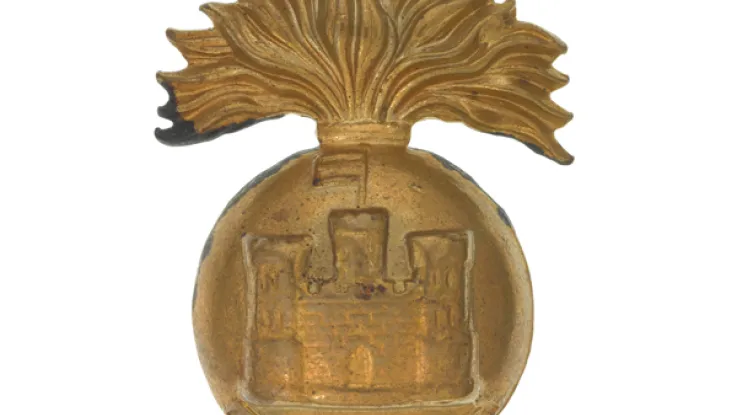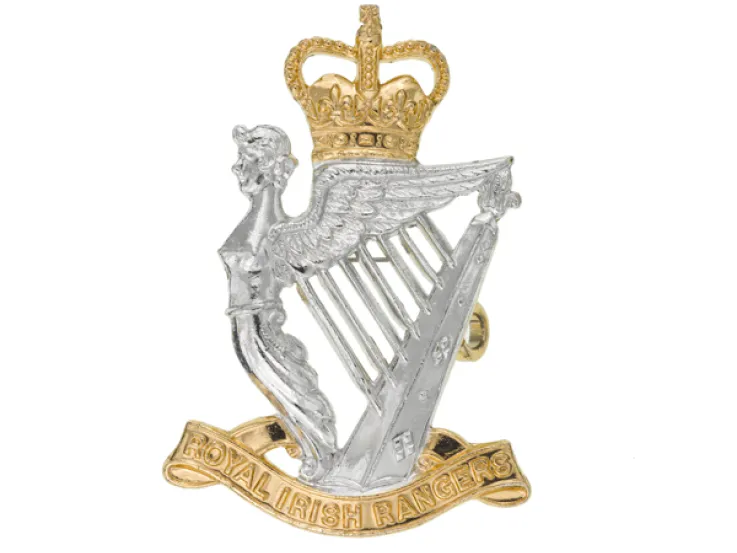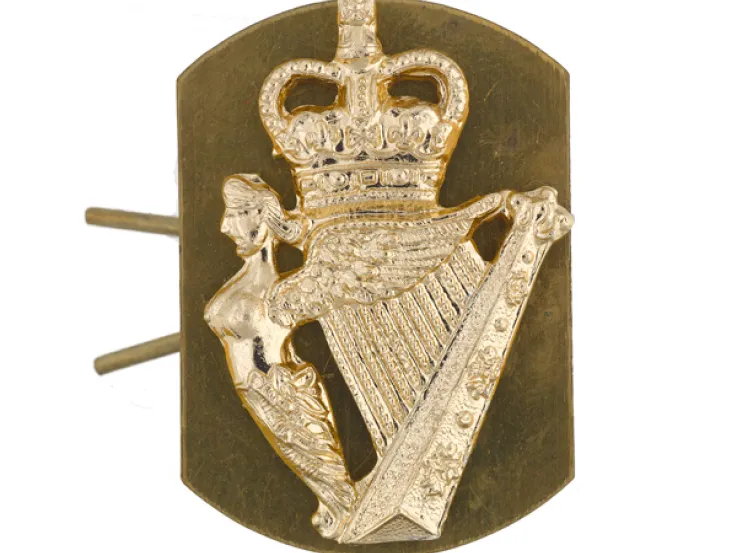The pipes and drums of The Royal Ulster Rifles, c1941
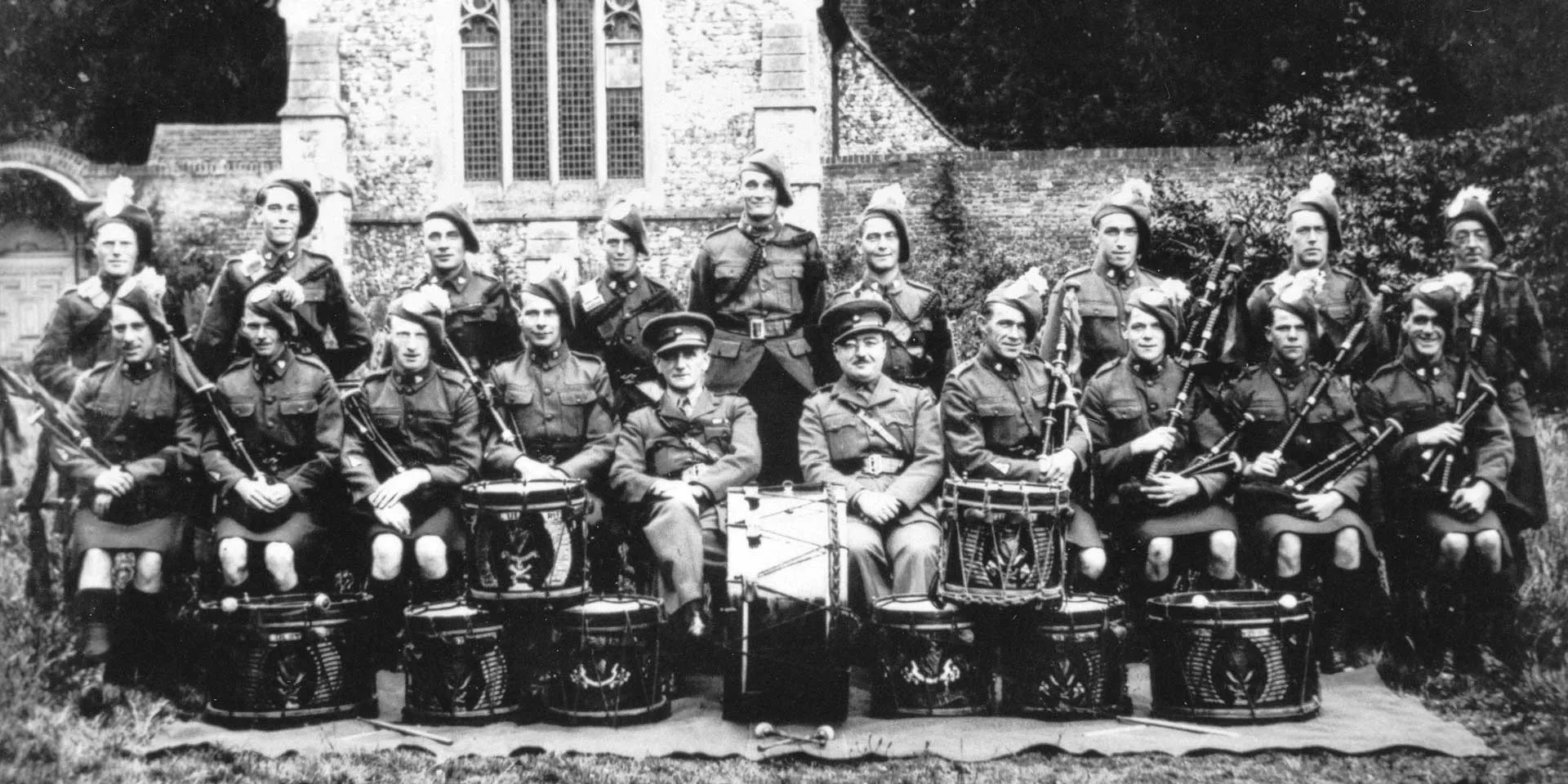
Origins
In 1881, the 83rd (County of Dublin) Regiment and the 86th (Royal County Down) Regiment were merged to form The Royal Irish Rifles. Although neither of these two regiments had been rifle units, the new regiment was given that status and role.
The 83rd became the new unit’s 1st Battalion. Already fighting in the Transvaal War (1880-81) in South Africa at the time, it moved to Guernsey the following year. In Bermuda in 1881, the 86th was converted into the new 2nd Battalion, shifting to Nova Scotia in 1883.
In the late 1880s, 2nd Battalion and a detachment from 1st Battalion fought in the Sudan, but 1st Battalion as a whole did not leave the British Isles again until 1897, when it moved to Natal and from there to India. While in India, it sent a small detachment to the Tibet Expedition (1904-04).
2nd Battalion fought throughout the Boer War (1899-1902), including the Battle of Stromberg (1899) where it sustained heavy losses. It returned to Ireland in 1903.
Officers' busby badge, The Royal Irish Rifles, c1902
Royal Irish Rifles maxim gun detachment, Tibet, 1904
First World War
Still in Britain on the outbreak of war in 1914, 2nd Battalion deployed straight to the Western Front. 1st Battalion joined it there from Aden in November 1914 and both remained there until the Armistice.
The regiment also raised 17 Reserve and New Army battalions during the conflict. One of these, 6th (Service) Battalion, saw service in Gallipoli, Salonika and Palestine. The others served at home and on the Western Front. Over 7,000 members of the regiment lost their lives.
A brazier-lit dug-out occupied by the 12th Royal Irish Rifles at Essigny, 1918
Inter-war era
In 1919, 2nd Battalion was sent to Iraq, moving on to Egypt and Turkey before garrisoning India for nine years in 1923. 1st Battalion spent the first post-war decade occupying Germany and stationed at home.
Irish independence in 1922 led to two changes for the regiment. ‘Irish’ was changed into ‘Ulster’ and it lost one of its recruiting counties, Louth, which became part of the Free State. Its other two counties, Antrim and Down, were in Northern Ireland and so the regiment survived Irish independence.
In 1931, 2nd Battalion returned to the Sudan. Other 1930s postings included Hong Kong and Egypt for 1st Battalion and Palestine for both battalions.
Recruiting poster for The Royal Ulster Rifles, c1922
Second World War
2nd Battalion was in Britain by the outbreak of war, deploying immediately to France. It was evacuated in June 1940 and remained in Britain for four years. It then landed in Normandy in June 1944 and fought throughout the ensuing campaign, finally occupying Germany for three years after VE Day.
1st Battalion was recalled from the North West Frontier of India in 1939 and retrained for landings by glider. It went on to fight in that role in Tunisia in 1942, Sicily in 1943, Normandy in June 1944 and the Rhine crossings in 1945.
Post-war
1st Battalion was moved from Germany to Palestine in 1945, remaining until the British withdrawal three years later. By then, it had reverted to its infantry role and merged with 2nd Battalion.
The regiment was then briefly sent to Northern Ireland. But in November 1950, it landed in Korea, going on to fight at the Battle of the Imjin River (1951).
Even after 1922, the regiment had continued to accept recruits from the Republic of Ireland. Nearly half of its men at the time of the Korean War (1950-53) came from there.
Three years in Hong Kong followed in 1951, along with periods in West Germany, England and Cyprus.
Royal Ulster Rifles pipers at a ceremony to award the Presidential Unit citation to the Gloucestershire Regiment, 1951
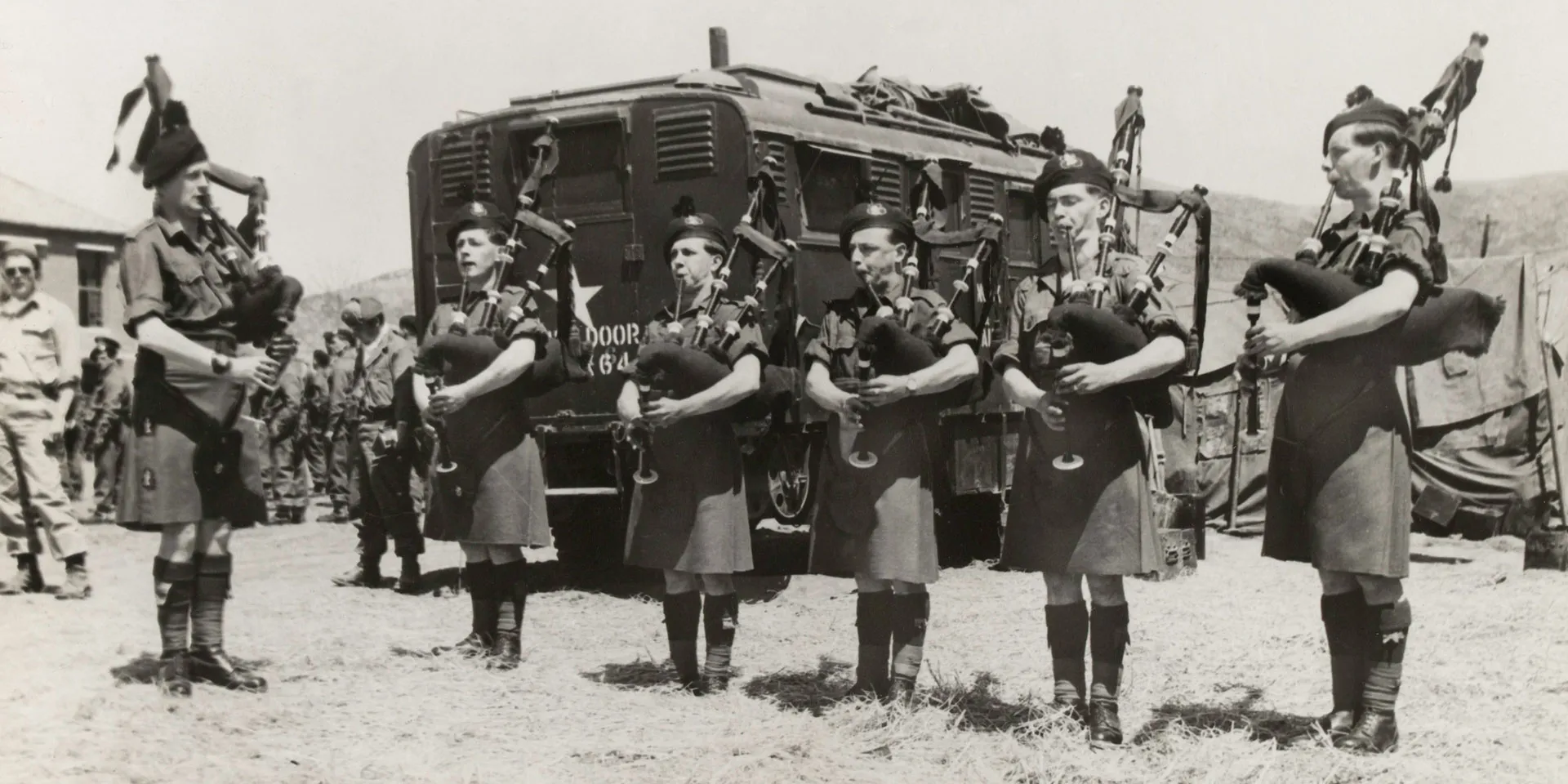
Legacy
By 1968, the regiment was in Gibraltar. That year, it was amalgamated with the two other Northern Irish infantry regiments, The Royal Irish Fusiliers (Princess Victoria’s) and The Royal Inniskilling Fusiliers, to form The Royal Irish Rangers (27th (Inniskilling), 83rd and 87th).
Regimental museums
The National Army Museum works with a network of Regimental and Corps Museums across the UK to help preserve and share the history and traditions of the Army and its soldiers.
Discover more about The Royal Ulster Rifles by visiting the Royal Ulster Rifles Museum in Belfast.

